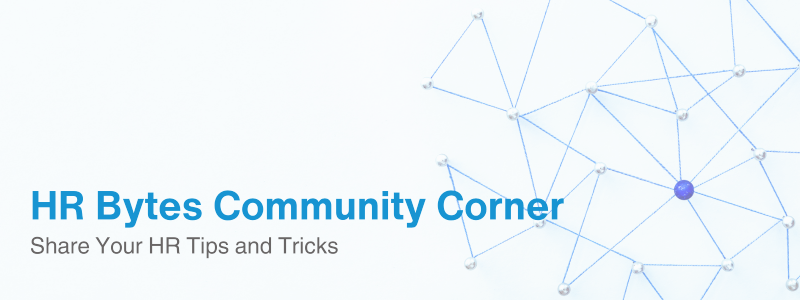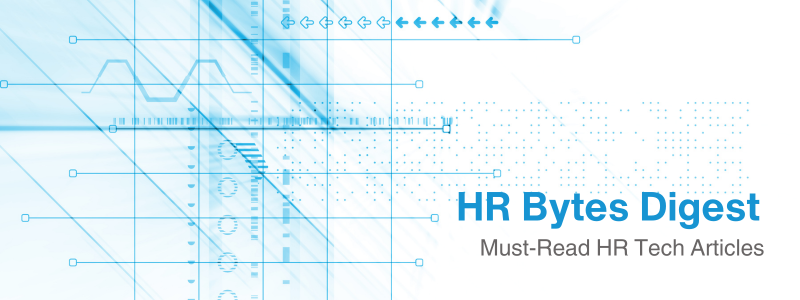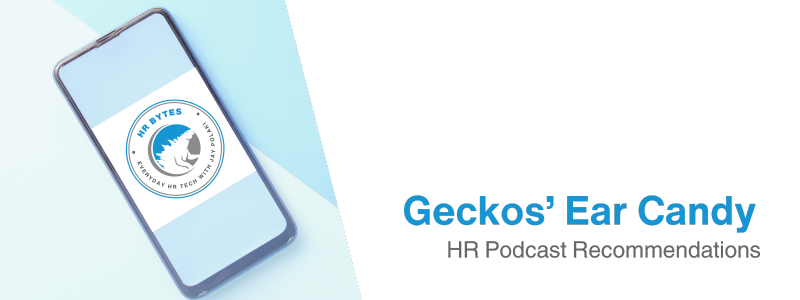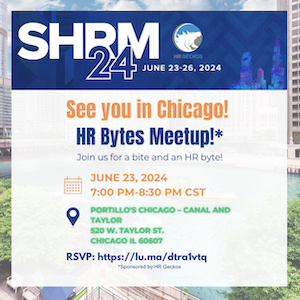HR BYTES NEWSLETTER
June 2024

Welcome to the June edition of HR Bytes, where we explore the latest trends, developments, and insights shaping the world of work. In this month's issue, we're enthused to share insights from Meg Bear on S4E2 of our HR Bytes™ VODcast and thoughts on keeping the human touch alive as we implement tech into our work from Mike Cilla, M.S., SHRM-CP. We are exploring cutting-edge advancements in AI and transformative shifts in HR automation, the unprecedented AI spending spree by tech giants like Alphabet, Amazon, and Microsoft, signaling a significant shift toward AI-driven innovation and infrastructure development, and other news bytes from the workplace. Join us as we unravel the latest innovations, challenges, and opportunities in the dynamic world of HR. Together, let's continue to learn, adapt, and thrive in shaping the future of work.

Slack CEO: 2 in 3 Workers Not Yet Using AI at Work
A survey by Slack revealed that 66% of workers haven't yet adopted AI at work, even though there is a growing urgency among executives to incorporate it. Despite inflation and the economy being less of a concern for employers, AI innovation has become their top priority. The survey of 10,000 desk workers worldwide found that 96% of executives now feel a strong urgency to incorporate AI, a figure that has surged seven-fold in the last six months. The benefits of AI for those who use it include increased productivity and better job satisfaction. However, trust and lack of training are major barriers. To fully realize AI's potential, organizations need clear AI guidelines, more training, and a shift in how they measure productivity. The focus should be on meaningful work rather than busywork, and efforts should be made to close gender gaps in AI usage.
Unlock AI Spending Microsoft, OpenAI and Google Prep Agents
Microsoft and the AFL-CIO have joined forces in a groundbreaking partnership aimed at developing artificial intelligence (AI) in a way that includes input from workers. This historic collaboration involves incorporating the voices of labor union members into AI development, providing training on AI for workers, and advocating for policies that benefit workers in the AI-powered economy. With concerns about AI potentially replacing human jobs on the rise, the partnership seeks to address these anxieties by ensuring that workers have a seat at the table in shaping the future of AI. Microsoft, known for its involvement in AI development through initiatives like OpenAI, and the AFL-CIO, representing millions of workers across various industries, are working together towards three main goals:
1. Incorporating worker feedback into AI development to create technology that is worker-centered.
2. Providing educational opportunities on AI for workers to adapt to the changing landscape of work.
3. Collaborating on policy development to support workers in the AI-powered economy.
AI in Talent Acquisition: The Next Big Leap
AI is changing how companies find and hire the right people. It can do things like go through resumes, match people to job descriptions, and analyze interviews, which makes hiring faster and more accurate. But humans are still really important. They understand things like tone and emotion in communication, they can make personal connections, and they're good at making tough decisions. AI isn't perfect; it can have biases and struggles with different cultures. The best way to hire is to use both AI and humans together. That way, companies can be efficient and still make sure they're hiring the right people for the job.

New York becomes first state to mandate paid time off for prenatal care
New York has taken a significant step forward by becoming the first state to mandate paid time off for prenatal care, starting in 2025. This move ensures that pregnant employees can attend appointments without worrying about lost wages or using up their existing family leave. Additionally, employers are now required to provide paid break time for nursing employees to express breast milk for up to three years after childbirth. This initiative reflects a growing recognition of the importance of supporting workers' reproductive and postpartum health. Other states like California have also implemented measures to address similar concerns, such as providing leave for reproductive loss.
The U.S. labor market is shifting toward skilled labor as white-collar hiring slows
The U.S. job market is undergoing some interesting shifts, with a spotlight on skilled labor versus knowledge-based professionals. Data shows a higher unemployment rate for professionals and business services workers compared to those in manufacturing. It's like a "buyer's market" for brainpower and a "seller's market" for manual labor. While April's job growth was below expectations, it's not all bad news. The slight rise in unemployment was seen as a "goldilocks" scenario by some economists, signaling a healthy balance between inflation and low unemployment.
Colorado Enacts First Comprehensive U.S. Law Governing Artificial Intelligence Systems
Colorado has taken a groundbreaking step in regulating the use of artificial intelligence systems with the introduction of the Colorado AI Act (CAIA). Signed into law by Governor Polis on May 17, this legislation marks the first comprehensive effort in the United States to address the potential risks associated with AI technology. The CAIA aims to protect individual rights and prevent discriminatory outcomes resulting from the use of high-risk AI systems. It builds upon existing best practices and incorporates input from a wide range of stakeholders, including a bipartisan group of policymakers led by Colorado Senate Majority Leader Rodriguez and Connecticut Senator Maroney. This collaborative approach underscores the complexity of regulating emerging technologies like AI, emphasizing the importance of incorporating diverse perspectives.

Ever heard of the mysterious "hush trips"? It's like entering a hidden world where work and wanderlust merge, turning remote work into a thrilling adventure. As HR wizards, you're the trailblazers navigating the wild terrain of flexible work setups, ensuring all is shipshape with rules and fostering a vibe of trust and openness.
Today, we're probing into the intriguing case of 'hush trips' in remote work. Imagine this: employees disappearing on covert work missions without a whisper, creating a whirlwind of challenges for companies in terms of policies and logistics.
While the idea of sneaky remote work jaunts may sound like a blast, it's not all rainbows and butterflies. These "hush trips" involve working from undisclosed locations, throwing a curveball into the mix of remote work dynamics. And hey, it's not just a fun game – legal and practical hurdles come into play, from tax matters to employment laws, keeping businesses on their toes.
Working from anywhere might sound cool, but it can lead to complications like not being covered by worker's comp if something goes wrong during work-related activities while traveling. Plus, there are tax implications, especially for long-term remote workers in different states or countries.
Having a clear travel policy that prohibits hush trips isn't about being strict; it's about staying compliant with laws and protecting both the company and its employees.
Working from anywhere might sound cool, but it can lead to complications like not being covered by worker's comp if something goes wrong during work-related activities while traveling. Plus, there are tax implications, especially for long-term remote workers in different states or countries.
Having a clear travel policy that prohibits hush trips isn't about being strict; it's about staying compliant with laws and protecting both the company and its employees.
While some travel is allowed within reasonable limits, it's crucial to communicate the rules, educate employees on why they exist, and take appropriate action if rules are broken, even up to termination if necessary.
Source: Inc Magazine

We asked HR practitioners how to strike a balance between technology and keeping people at the forefront of their decisions. Here’s Mike Cilla’s take on it!
As we embrace digital transformation in HR, we must not lose sight of our core mission: to put people first. It's crucial that we don't let tools overshadow the personal touch that's so vital to our work.
Take, for instance, the sensitive discussions around medical insurance benefits—these are not just transactions but pivotal moments of trust between the employee and HR. Here, the nuances of human interaction are irreplaceable. Each step of automation must be considered in terms of its impact on the individual’s experience. We need to keep our humanity front and center, remembering that at the heart of every HR process is a person whose needs and feelings are not necessarily algorithmic.
As we advance our HR technology, I urge all HR professionals to evaluate the balance between automation and personal interaction continuously. Let’s commit to regular reviews of our automated processes, particularly those handling sensitive inquiries. Let's engage with employees to gather feedback on their experiences and adjust our systems accordingly. This ongoing dialogue will ensure that our technology enhances the human aspects of HR rather than diminish them.

The AI Gender Gap: What HR Can Do
Jess Von Bank explores the significant gender gap in attitudes toward artificial intelligence (AI) and discusses how HR can address it. Women, more than men, tend to perceive AI as threatening due to fears about economic uncertainty, personal security, and the impact of mega change. To bridge this gap, HR can take proactive steps such as promoting fair representation of women in STEM fields, implementing tougher rules on digital crimes, and ensuring workforce policies promote equity for women in the age of AI. By acknowledging and addressing these fears, HR can help prevent the unnecessary harm and disproportionate impact of AI on women and other vulnerable groups.
HR’s New Role
The evolution of the human resources (HR) function from focusing on cost-cutting to prioritizing employee well-being. It highlights the shift in HR's role due to factors like a tight job market and rising workplace stress. The article emphasizes the need for HR to advocate for employees and drive changes in company policies. It also underscores the importance of providing accurate data to company leaders regarding the true costs of turnover and the impact of employee stress. Overall, HR's new role involves prioritizing employee welfare, providing valuable data, and advocating for policies that support long-term success.
Navigating AI in HR: 5 Questions Every HR leader Must Ask
In today's HR landscape, artificial intelligence (AI) is reshaping the way businesses manage their human resources. With promises of increased efficiency and insights, AI is transforming recruitment, talent management, and employee engagement. However, HR leaders face critical considerations in implementing AI responsibly and effectively.
Firstly, HR leaders must understand how AI can enhance human capabilities rather than replace them entirely. By automating mundane tasks, AI frees up time for HR professionals to focus on strategic decision-making and fostering innovation within the workforce.
Secondly, ensuring fairness and equity in AI-driven HR practices is crucial. HR leaders must implement ethical frameworks and diversify datasets to mitigate biases and promote inclusivity.
Thirdly, while enhancing the employee experience through AI-driven personalization is beneficial, respecting privacy and data protection is paramount. HR leaders must balance delivering tailored solutions with safeguarding sensitive personal information.
Moreover, investing in upskilling and reskilling initiatives is necessary to prepare the workforce for AI integration. HR leaders should prioritize training programs to equip employees with the digital fluency and AI literacy needed to thrive in the evolving workplace.
Lastly, AI can play a significant role in building stronger workplace cultures by streamlining processes like workplace investigations and uncovering systemic issues. By aligning AI practices with organizational values, HR leaders can ensure that these technologies contribute positively to culture, fostering an environment of inclusivity and continuous improvement. In navigating AI in HR, asking these five questions can help HR leaders harness the potential of AI while addressing ethical, privacy, and cultural considerations to drive organizational success.
4 Ways Organisations Are Using AI to Enhance Their HR Processes
How organizations are using artificial intelligence (AI) to improve various aspects of their human resources (HR) operations. It highlights four main ways AI is being utilized: creating AI ‘employees’ to assist with tasks and provide feedback, using AI to tailor communication styles, implementing personalized learning pathways for employees, and utilizing AI-powered tools for feedback management. Overall, it emphasizes how AI is revolutionizing HR processes, making them more efficient, personalized, and supportive for employees, ultimately contributing to organizational growth and innovation.
Why People Skills Are Still Important In The Age Of AI
In today's era dominated by artificial intelligence (AI), the value of people skills remains paramount. While AI can handle many tasks, it lacks the human touch needed for creativity, emotional understanding, and relationship-building. This underscores the ongoing importance of human capabilities. To further develop these skills, engaging in group activities, practicing active listening, reading, mindfulness, and embracing a growth mindset are recommended. Investing in people skills not only benefits individual career growth but also enhances one's value to any organization amidst the evolving landscape of work.
Are You Developing Skills That Won’t Be Automated?
In the future, many jobs might be taken over by machines, leaving people worried about their employment. Studies predict that a significant portion of jobs could be automated soon. But instead of focusing solely on which jobs might disappear, it’s important to consider which aspects of jobs will remain human-driven. Some jobs like being a barista have seen automation, but the social interaction aspect, like chatting with a bartender, remains uniquely human. Two key aspects make some jobs harder to automate: emotion and context. Humans excel at understanding and expressing emotions, and they can adapt to different situations by considering the context. These skills are crucial for critical thinking, problem-solving, and effective communication—qualities that employers highly value. Employers seek candidates who can think critically, communicate clearly, and work well with others. These are the skills that technology struggles to replicate, giving humans an advantage in the job market.
For Success With AI, Bring Everyone On Board
The importance of involving employees in the adoption of AI technology within organizations, particularly from a human resources (HR) perspective, is emphasized in the piece. It highlights that while AI can enhance efficiency and productivity, it's essential to ensure that employees feel included and empowered throughout the process. Common challenges arising when AI adoption excludes employees, such as loss of autonomy, resistance to AI, and the creation of business silos, are outlined. Strategies for inclusive AI adoption are suggested, including fostering collaboration between tech and non-tech teams, providing support and training for employees, and creating a culture of openness and empathy among leadership. Overall, the need for HR professionals and leaders to prioritize employee involvement and well-being in AI initiatives to maximize their success and ensure a positive organizational impact is underscored.


We're tuning in to the People Managing People podcast. Host David Rice talks to top industry professionals to provide the tips, tricks, and tools to recruit, retain, and manage your people and organization more effectively.

Of course, we are excited for Season 4 Episode 2 of our very own HR Bytes,
where we share stories of HR trailblazers who are redefining HR with a global mindset and local impact.
This month, our guest is Meg Bear!
Tune in to our latest Season 4 Episode 2 on your favorite podcast channel and YouTube.
Check out our most recent conversations on your favorite podcast channel or YouTube! https://hrgeckos.com/podcast.html.

We found some new reads to stay ahead of HR and the future of work trends! What is on your HR bookshelf this month?

AI 2041: Ten Visions for Our Future by Kai-Fu Lee (March 2024)

Creating the Intangible Enterprise: The Critical Skills Required to Thrive in an AI-Driven World by KP Reddy (April 2024)

The Future of No Work: Master AI, gain superpowers, earn more and live by your own rules by Filip Drimalka (May 2024)

Synergies in the Age of AI: Exploring the Dynamics of Human and AI Collaborations by Oren Eilam (April 2023)

AI Made Simple: A Beginner’s Guide to Generative Intelligence by Rajeev Kapur (September 2023)

The CHAMELEON Leader: Connecting with Millennials by Dr. Ranya Nehmeh (November 2019)
Curious about the future of HR tech?
Dive into the future with our HR Bytes Newsletter, your source for cutting-edge HR Tech insights
We’re thrilled to share our HR Bytes Sticker!
Be part of the HR Bytes community.
Share your thoughts and claim your sticker here: https://tinyurl.com/3a4ecx62
Stay tuned, stay inspired!

Hey HR pros, as we dive into June, let's do it with finesse. Here's your heads-up for the month ahead, highlighting those must-know dates to make your HR journey a breeze!
June 1: Prescription Drug Data Collection (RxDC) Deadline.
June 15: Deadline for filing Form 5500 for employee benefit plans (for plans with a December 31 year-end). This form is related to reporting information about the plan’s financial condition, investments, and operations.
June 30: Form 720: This deadline pertains to reporting and paying the federal excise tax on certain health-related items.
June 30: End of the second quarter for tax purposes: Ensure that all payroll taxes, including federal income tax withholding, Social Security, and Medicare taxes, are accurately reported and paid. This is crucial for compliance with federal tax regulations.


